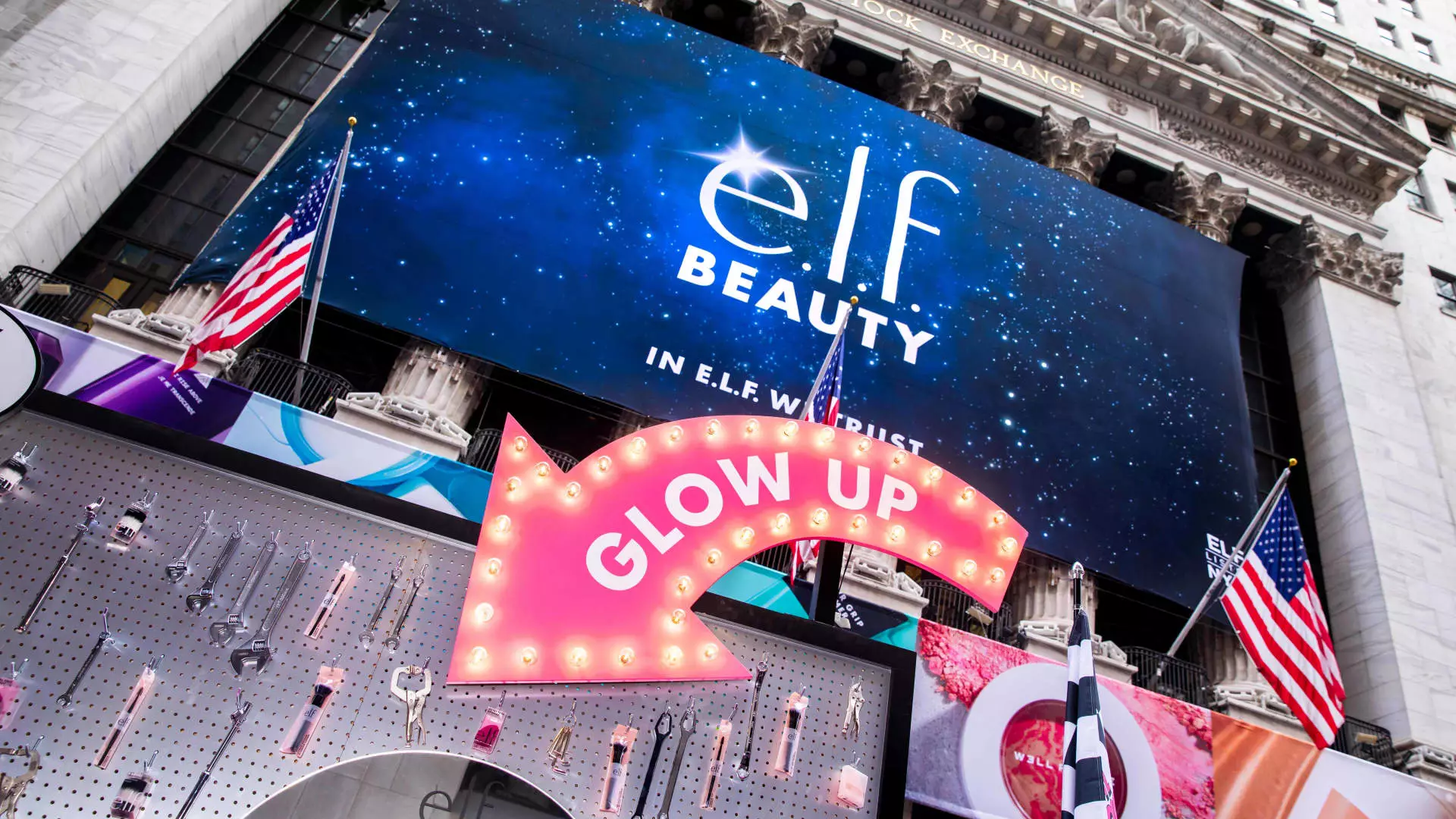The recent imposition of a new 10% tariff on Chinese imports has sent ripples through various sectors of the economy, particularly for companies like E.l.f. Beauty, which heavily relies on manufacturing in China. The CEO of E.l.f. Beauty, Tarang Amin, expressed a sense of relief that the tariff rate remained at 10%, significantly lower than earlier threats of up to 60%. This reaction underscores the precarious balance that companies must maintain when faced with shifting trade policies and the uncertainty they create. As manufacturing and supply chain dynamics become increasingly globalized, the implications of tariffs extend far beyond short-term pricing considerations; they require strategic foresight.
In light of the newly announced tariffs, E.l.f. Beauty finds itself at a crossroads. Amin highlighted the need for a nimble approach in deciding whether to adjust product pricing, indicating that the company is not rushing to make decisions until more clarity regarding the tariff situation emerges. This strategy reflects a broader trend where businesses are learning from past experiences to avoid knee-jerk reactions that could alienate a cost-sensitive customer base. In the midst of the tariff volatility, E.l.f. has the opportunity to assess its pricing strategy while also emphasizing its role as a provider of affordable beauty solutions, ensuring it maintains its market positioning even as economic factors fluctuate.
Furthermore, the context of these tariffs cannot be ignored. Amidst escalating trade tensions between the U.S. and China, including retaliatory measures by the latter, companies with robust international operations, like E.l.f., may well be better positioned to absorb disruptions. The company’s reduced reliance on Chinese manufacturing—around a 20% decrease since the previous tariff upheaval—suggests a proactive approach to diversifying its supply chain. This strategic adjustment not only mitigates risks associated with heightened tariffs but also positions E.l.f. for sustainable growth.
Historically, consumer reactions to price increases within the beauty industry can vary, but E.l.f.’s previous experience provides valuable insights. During the earlier implementation of 25% tariffs under the prior administration, the company raised prices on one-third of its product line by $1, yet still noted a “good consumer response.” This resilience suggests that customers may prioritize value and brand loyalty over price fluctuations, particularly in an arena where E.l.f. has established itself by providing affordable alternatives to higher-end cosmetics.
The question remains whether the new tariff environment will invoke a different response from consumers. Given the nature of the beauty market, where brand loyalty can drive sustained sales, companies like E.l.f. must tread carefully when adjusting prices. By employing a measured approach and capitalizing on their brand’s reputation for affordability, E.l.f. could navigate potential pitfalls while reinforcing its market advantages.
Amin’s foresight about the long-term impacts of supply chain choices remains particularly noteworthy. He noted that any consequences from current tariffs would likely not materialize until well into the fiscal year 2026. This extended timeline hints at realities many companies face: immediate challenges often stem from decisions made long before current events play out.
As companies strive to adapt to changing international trade dynamics, the importance of strategic supply chain management becomes paramount. E.l.f.’s ability to reduce dependency on China while expanding its international presence could serve as a blueprint for others in the industry. By diversifying production and tapping into new markets, E.l.f. is not only alleviating potential tariff pressures but also growing their global footprint, which can lead to greater resilience against future economic disruptions.
The interplay of tariffs and consumer perceptions creates a uniquely challenging environment for companies like E.l.f. Beauty. While recent tariff announcements may seem less severe than previous estimates, the broader implications for manufacturing practices and pricing strategies are still profound. By remaining adaptable, strategically managing supply chains, and maintaining a focus on consumer loyalty, E.l.f. Beauty sets an example for navigating the complexities of a globalized market. As the situation continues to evolve, the company’s decisions will likely offer valuable lessons not only for their brand but for the wider industry as well.

